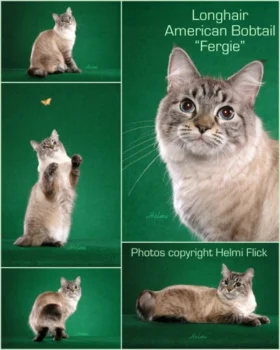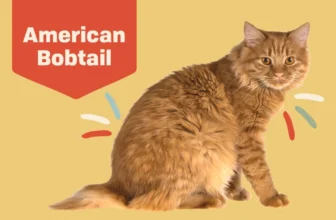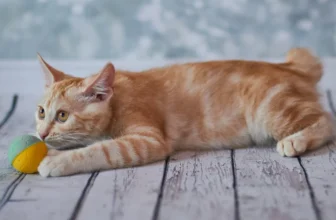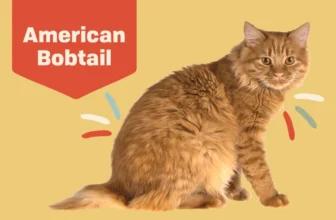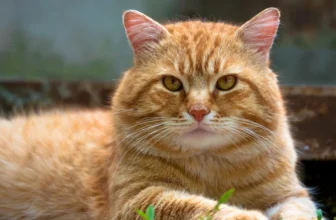As cat lovers, we all know that felines come in different shapes and sizes. The American Bobtail is no exception, with its distinct muscular build and short tail that sets it apart from other breeds. But have you ever wondered what lies beneath their charming exterior? In this in-depth guide, we’ll delve into the bone structure of American Bobtails and explore what makes it unique. From the components of their skeleton to the effects on their health, we’ll take a closer look at these fascinating creatures and learn how to care for their bone structure. So, let’s grab our catnip and begin uncovering the mysteries of the American Bobtail’s bone structure.
What Makes American Bobtail’s Bone Structure Unique?
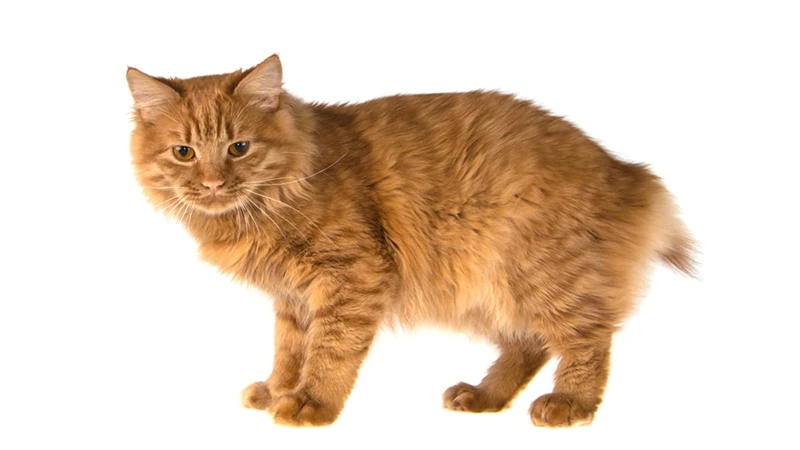
When we look at feline bone structure, it is easy to see how it can vary between different breeds of cats. The same goes for the American Bobtail. As we take a closer look at their bone structure, we can highlight some unique features that distinguish them from other cat breeds. The American Bobtail’s bone structure has developed through years of natural selection, providing them with the ability to adapt to changing environments. Some key features that make their bone structure unique are their muscular build and short tails. These features help to enhance their physical capabilities and improve their hunting skills. Let’s take a closer look at each feature to understand how they lend to the American Bobtail’s unique bone structure. If you want to read more about American Bobtail’s muscles, follow this link.
Their Muscular Build
When it comes to American Bobtails, their muscular build is one of their defining physical characteristics. Their body composition is different from other cat breeds and is a result of their evolution and breeding history. American Bobtails have a stocky and athletic build, which is reflected in their bone structure.
Compared to other breeds, American Bobtails are not very tall. However, they have a broad and strong chest, muscular shoulders, and powerful hindquarters. This gives them a distinct look and makes them easily recognizable.
To better understand their muscular build, here is an overview of their body measurements:
| Measurement | Average |
|---|---|
| Weight | 7-16 pounds |
| Body length | Short to medium |
| Body proportion | Well-balanced |
| Muscle mass | High |
| Tail size | Short and thick |
Their muscular build also affects their overall health. American Bobtails need regular exercise to maintain their strength and prevent them from becoming overweight. They have been known to have an affinity for playing fetch and walking on a leash, making them a great companion for active owners.
As with any breed, it’s important to provide proper nutrition, preventive care, and regular vet check-ups to ensure your American Bobtail stays healthy and happy.
Their Short Tails
When it comes to American Bobtails, one of the most recognizable aspects of their bone structure is their short tails. While some cats have long, flowing tails, the American Bobtail’s tail is typically only one-third to one-half the length of a typical cat’s tail.
What makes the American Bobtail’s short tail unique?
The American Bobtail’s short tail is due to a naturally occurring genetic mutation. This trait is inherited from both parents and is not the result of any human intervention or breeding.
How does their short tail affect their bone structure?
The American Bobtail’s short tail may seem like a small detail, but it actually has a significant impact on their bone structure. Because the tail is shorter, the vertebrae in the tail are wider and more robust than in a typical cat’s tail. This gives the American Bobtail’s tail more strength and stability, allowing them to use it for balance and support in a way that other cats cannot.
To illustrate this, take a look at the following table:
| Cat Breed | Tail Length | Number of Vertebrae | Vertebrae Diameter |
|---|---|---|---|
| American Bobtail | Short | 4-6 | Wider and more robust |
| Typical Cat Breed | Long | 12-23 | Thinner and less robust |
As you can see, the American Bobtail’s shorter tail has a significant impact on their bone structure. The wider and more robust vertebrae in their tail give them greater balance and support, making them better equipped for activities like climbing and jumping.
What are some health considerations when it comes to the American Bobtail’s short tail?
While the American Bobtail’s short tail is a unique and distinctive feature, it can also cause some health issues. Some American Bobtails may experience spinal problems as a result of their shorter tail and wider vertebrae. This can lead to issues like back pain, mobility issues, and even paralysis in severe cases.
To prevent these issues, it’s important to monitor your American Bobtail’s spinal health closely. Regular checkups with a veterinarian can help catch any issues early on and create a plan to manage them. Additionally, providing your American Bobtail with toys and activities that promote spinal health, such as climbing and jumping, can help keep their bones strong and healthy.
The Components of an American Bobtail’s Bone Structure
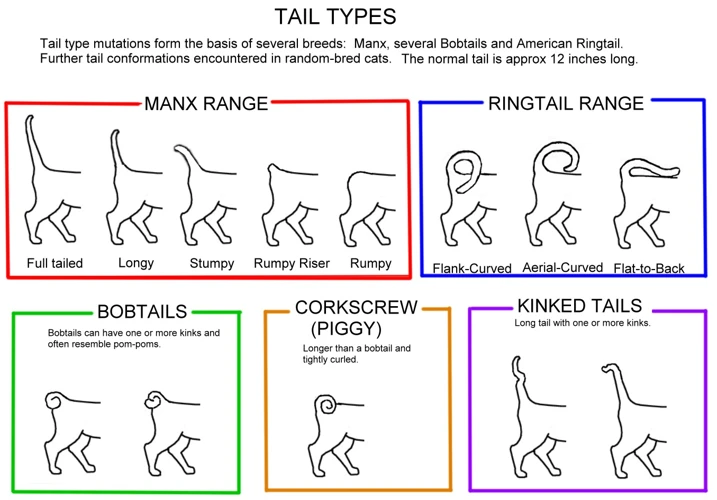
As we delve deeper into understanding the bone structure of the American Bobtail, it’s important to examine the intricacies of their anatomy. From the cranium and skull to the limbs and paws, each component plays a vital role in the cat’s overall health and well-being. Let’s explore each aspect of their unique bone structure and learn what sets them apart from other cat breeds.
The Cranium and Skull
The cranium and skull of an American Bobtail is another unique feature of their bone structure. Their skull is broad and rounded with a slightly convex profile. The strong jaw line of an American Bobtail is supported by a robust bony structure, which enables them to be powerful predators.
Here are some key features of the cranium and skull:
- The occiput, or the back of the skull, is wide and rounded, giving the cat a strong and powerful appearance.
- The frontal bone, located at the front of the skull, is broad and well-developed, accommodating the cat’s strong jaw muscles.
- The zygomatic arches, or cheekbones, are wide and prominent, providing a broad base for the cat’s jaw muscles.
- The orbits, or eye sockets, are large and rounded, providing plenty of room for the cat’s eyes to move and focus on prey.
The cranium and skull play an important role in protecting the cat’s brain and other vital organs. It also provides a base for the muscles used in chewing and biting, which are essential for hunting and defending themselves. The American Bobtail’s broad skull and strong jaw give them the ability to crunch through bones and tough meat.
However, it’s important to note that with age, the muscles in their skull can weaken or atrophy, leading to dental issues, which can impact their overall health. It’s important to regularly monitor and care for their dental health through regular vet check-ups and a good oral hygiene routine.
The Spine and Vertebrae
The spine and vertebrae of an American Bobtail’s bone structure play a crucial role in the feline’s overall health and mobility. Their spine is composed of 7 cervical vertebrae, 13 thoracic vertebrae, 7 lumbar vertebrae, 3 sacral vertebrae, and a variable number of caudal vertebrae, which are responsible for their short and unique tails.
The cervical vertebrae of an American Bobtail’s bone structure provide support for their head and neck, allowing them to easily look around and explore their surroundings. These vertebrae are smaller and more delicate compared to the rest of the spine.
The thoracic vertebrae, also known as the dorsal vertebrae, make up the mid-region of the feline’s spine. These vertebrae articulate with their ribs, providing support and protection for the feline’s internal organs.
The lumbar vertebrae are the largest and strongest of the spinal vertebrae. They provide flexibility, stability, and support for the feline’s entire body weight. These vertebrae are also important for a cat’s posture, balance, and overall mobility.
The sacral vertebrae are fused together and form the base of the spine. They play a vital role in the cat’s movement and stability, especially during jumping, running, and climbing activities.
The caudal vertebrae, or the tailbones, vary in number and length for each individual cat, which contributes to the unique characteristics of the breed’s short and stubby tails. These vertebrae are responsible for controlling the feline’s balance, communication, and even prehension (the ability to grasp and hold onto objects).
Any issues with an American Bobtail’s spinal and vertebral health can seriously impact their quality of life. Regular check-ups and screenings, proper nutrition and exercise, and creating a safe and healthy environment can all contribute to maintaining the health and well-being of the feline’s unique bone structure.
| Type of vertebrae | Function |
| :—– | :——- |
| Cervical vertebrae | Support for head and neck |
| Thoracic vertebrae | Support and protection for internal organs |
| Lumbar vertebrae | Flexibility, stability, and support for body weight |
| Sacral vertebrae | Vital role in movement and stability |
| Caudal vertebrae | Control balance, communication, and prehension |
The Limbs and Paws
Just like their cranium and spine, an American Bobtail’s limb bones are robust and muscularly built. Their limbs are made up of several segments, including the humerus, radius, ulna, and paw bones, which all work together to provide their body with support, stability, and mobility.
The limbs of an American Bobtail are designed for jumping and sprinting, enhancing their agility and speed while hunting. Their front limbs are shorter than their hind limbs, allowing them to crouch and pounce on prey with ease. American Bobtails also have strong paws with sharp claws that help them climb, scratch, and catch prey.
The paw bones of an American Bobtail are complex, consisting of several segments and joints that allow for various movements. The paw pads are thick and cushioned, aiding in shock absorption and providing insulation from cold surfaces. The claws, on the other hand, are sharp and curved, perfect for gripping onto prey or climbing trees.
It’s essential to care for an American Bobtail’s limbs and paws to ensure they stay healthy and mobile. Exercise is crucial, and providing plenty of opportunities to climb and play can keep their muscles and bones strong. Regular walks and indoor play sessions can also provide the necessary movement to prevent joint stiffness and arthritis.
A healthy diet is crucial for maintaining an American Bobtail’s bone health, including the bones in their limbs and paws. Food with calcium, phosphorus, and vitamins D and C can help promote strong bones and teeth. Providing sufficient water is also essential to keep their joints lubricated and promote flexibility.
Understanding an American Bobtail’s bone structure is essential to their overall health and well-being. By providing proper nutrition, exercise, and check-ups, we can ensure they continue to have robust and healthy bones in their limbs and paws, enhancing their agility and mobility for years to come.
| Limb Bones | Paw Bones |
|---|---|
| humerus | phalanges |
| radius | metatarsals |
| ulna | carpal bones |
| sesamoid bones |
How Does an American Bobtail’s Bone Structure Affect Their Health?
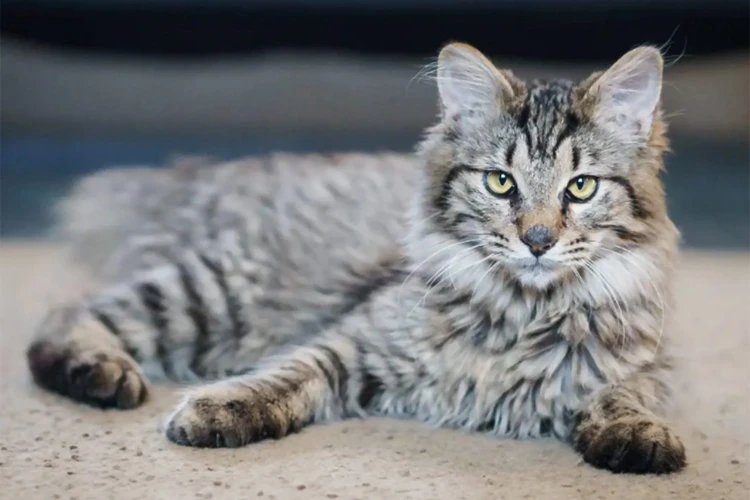
When it comes to owning an American Bobtail, it’s important to understand how their unique bone structure can impact their overall health and wellbeing. Certain health issues, such as hip dysplasia, may arise due to their bone structure, but with proper care and attention, these issues can often be prevented. In this section, we’ll explore the ways in which an American Bobtail’s bone structure can affect their health and what you can do to keep your furry friend feeling their best.
Issues with Hip Dysplasia
Hip dysplasia is a common health issue that affects the bone structure of American Bobtails. It occurs when the hip joint is improperly formed, leading to a loose and unstable joint. This can then cause wear and tear on the joint over time, resulting in inflammation, pain, and stiffness.
Some of the signs of hip dysplasia include:
- Difficulty standing up or lying down
- Limping or favoring one leg
- Decreased range of motion in the hips
- Behavioral changes, such as irritability or depression
Although hip dysplasia is a genetic condition that can be inherited from a cat’s parents, there are environmental factors that can contribute to its development. These include obesity, over-exercising at a young age, and poor nutrition.
If left untreated, hip dysplasia can lead to arthritic changes in the joints, which can cause chronic pain and stiffness. In extreme cases, surgery may be required to replace the hip joint.
Preventing hip dysplasia in American Bobtails:
- Ensure that your cat maintains a healthy weight
- Limit high-impact exercises, such as jumping and running
- Provide a nutritious diet that is rich in essential vitamins and minerals
- Ask your veterinarian about supplements that support joint health, such as glucosamine and chondroitin
If you suspect that your American Bobtail might be suffering from hip dysplasia, it is important to schedule a visit with your veterinarian as soon as possible. Early intervention can help to slow the progression of the condition and improve your cat’s quality of life.
Preventing Joint Pain and Arthritis
Joint pain and arthritis are common health concerns for American Bobtails due to their unique bone structure. However, there are steps that owners can take to prevent these issues from arising.
Regular exercise and activity can help keep the joints and bones of an American Bobtail healthy. Owners should ensure that their cat gets enough exercise and playtime to keep their muscles strong and their joints limber. This can include playing with toys, using scratching posts, and engaging in interactive play sessions.
A healthy diet can also have a significant impact on an American Bobtail’s bone and joint health. A diet that is rich in protein, vitamins, and minerals can help keep bones strong and prevent joint pain. Conversely, a diet that is high in fat and processed foods can put extra stress on the joints and contribute to joint pain and inflammation. Owners should consult with a veterinarian to determine the best diet for their cat’s specific needs.
Supplements and medications can also help prevent joint pain and arthritis in American Bobtails. Glucosamine and chondroitin supplements can help lubricate the joints and reduce inflammation, while pain medications can provide relief for existing joint pain. However, it is important to consult with a veterinarian before administering any supplements or medications to ensure safety and efficacy.
Finally, regular check-ups and health screenings can help catch any potential issues with an American Bobtail’s bone and joint health early on. Owners should schedule regular appointments with their veterinarian, who can perform x-rays and other tests to assess bone density and joint health.
| Preventing Joint Pain and Arthritis |
|---|
| Regular exercise and activity |
| A healthy diet |
| Supplements and medications |
| Regular check-ups and health screenings |
By taking these preventative measures, owners can help ensure that their American Bobtail stays healthy and happy for years to come.
Nurturing and Caring for an American Bobtail’s Unique Bone Structure
As owners of an American Bobtail, it’s important to understand the unique bone structure of this majestic breed and how to properly care for it. A healthy bone structure is essential for your bobtail’s overall health and vitality. In this section, we will discuss the various ways you can nurture and care for their bones to ensure they maintain optimal health and well-being. Let’s dive in!
The Right Diet and Exercise Routines
A proper diet and exercise routine are crucial in maintaining an American Bobtail’s bone structure and overall health. Providing them with the right nutrients and keeping them active can prevent obesity and joint issues. Here are some tips for ensuring your feline friend gets the proper nutrition and exercise they need.
Nutrition
Firstly, it’s essential to feed your American Bobtail a high-quality, protein-rich diet to promote healthy bones and muscles. Look for cat foods that contain real meat as the first ingredient, along with essential vitamins and minerals like calcium and vitamin D. Avoid giving them too many treats, as they are often high in calories and lacking in essential nutrients.
Additionally, consider adding supplements to their diet that can promote bone and joint health. Glucosamine and chondroitin are two common supplements that can aid in joint support and reduce inflammation.
Below is a table that provides a summary of essential nutrients for your American Bobtail’s bone and joint health:
| Nutrient | Function | Food Sources |
|---|---|---|
| Protein | Builds and repairs muscles, tissues and bones | Meat, fish, eggs |
| Calcium | Builds strong bones and teeth | Cheese, yogurt, milk |
| Vitamin D | Aids in calcium absorption and bone growth | Tuna, salmon, eggs, sunlight |
| Omega-3 fatty acids | Reduces inflammation and aids in joint health | Fish, flaxseed, walnuts |
Exercise
Just like humans, regular exercise plays a crucial role in maintaining an American Bobtail’s bone structure and overall health. Not only does it keep them physically fit, but it also promotes mental stimulation and reduces stress.
Here are some tips for incorporating exercise into your American Bobtail’s routine:
- Provide them with toys that encourage running, jumping and climbing, such as toy mice, feathers or climbing trees.
- Take them for a walk outside on a leash or in a pet stroller.
- Provide scratching posts and pads to promote healthy claws and stretch their muscles.
- Use puzzle feeders to promote mental stimulation during mealtime.
Be sure not to push your American Bobtail too hard during exercise, as overexertion can lead to strain on their joints and muscles. It’s also essential to monitor their activity level and adjust their routine accordingly to prevent obesity and joint issues.
By providing your American Bobtail with a nutritious diet and regular exercise, you can ensure their unique bone structure stays healthy and strong.
Regular Check-Ups and Health Screenings
As an American Bobtail owner, it’s important to prioritize regular check-ups and health screenings for your feline friend. This is especially important given the unique bone structure of this breed, which can put them at higher risk for certain health issues. Here are some steps you can take to ensure your American Bobtail stays healthy:
- Schedule consistent vet appointments: Make sure to schedule routine check-ups with your veterinarian at least once a year. During these appointments, your vet can perform a physical exam and run any necessary tests to ensure your cat is healthy.
- Watch for signs of pain or discomfort: Because American Bobtails are prone to joint pain and arthritis, it’s important to watch for any signs of pain or discomfort in your cat. If you notice any limping, reluctance to move, or other signs of discomfort, take your cat to the vet right away.
- Consider getting X-rays: If your American Bobtail is experiencing joint pain or other bone-related issues, your vet may recommend X-rays. These can help to diagnose conditions like hip dysplasia and arthritis, and can guide treatment plans.
- Screen for genetic conditions: In addition to regular check-ups, you may want to consider genetic health screenings for your American Bobtail. Certain genetic conditions can impact bone health, and screening can help you identify these issues early on.
- Stay up-to-date on vaccinations: Keeping your American Bobtail up-to-date on vaccinations is an important part of maintaining their overall health. Vaccinations can protect against a range of illnesses and diseases that can impact their bone health and overall well-being.
By staying proactive about your American Bobtail’s health, you can help ensure that they stay healthy and happy for years to come. Don’t hesitate to reach out to your veterinarian with any questions or concerns – they’ll be happy to help you provide the best care for your furry friend.
Conclusion
In conclusion, understanding the bone structure of American Bobtail cats is essential for any pet owner who wishes to provide them with the best care possible. From their muscular build and short tails to the components of their bone structure, American Bobtails are a unique breed that requires specialized attention.
It is important to note how an American Bobtail’s bone structure affects their health and how to prevent issues such as hip dysplasia and joint pain. Nurturing an American Bobtail’s bone structure involves providing the right diet and exercise routines along with regular check-ups and health screenings with a veterinarian.
Overall, with the right care and attention, American Bobtails can lead healthy, happy lives with their unique bone structure. It is crucial to prioritize their wellbeing and understand their individual needs to ensure they thrive. Owning an American Bobtail cat can be a rewarding experience, and their unique bone structure only adds to their charm and appeal as a beloved companion.
Frequently Asked Questions
What are some common health issues that American Bobtails face?
Hip dysplasia and joint pain are common issues that American Bobtails face due to their unique bone structure.
How can I prevent joint pain in my American Bobtail?
Regular exercise, a balanced diet, and joint supplements recommended by your vet can help prevent joint pain and promote healthy bones.
Are there any specific exercises that are good for American Bobtails?
American Bobtails are an active breed and benefit from daily exercise that includes climbing, running, and interactive playtime.
Can American Bobtails jump higher than other cats?
Due to their muscular build, American Bobtails are known for their exceptional jumping abilities and can jump higher than many other breeds.
Do American Bobtails need a special diet?
While they do not require a special diet, feeding your American Bobtail a balanced, high-protein diet can help support their strong muscles and bones.
How often should I take my American Bobtail to the vet?
Regular check-ups and health screenings with a veterinarian are important for maintaining the health of your American Bobtail. The frequency of these visits may vary depending on your cat’s age and individual health needs.
Is it important to monitor my American Bobtail’s weight?
Yes, maintaining a healthy weight is important for your American Bobtail’s overall health and can help prevent joint issues later in life. Talk to your vet about a healthy weight range for your cat.
What kind of toys do American Bobtails enjoy?
American Bobtails are known for their love of interactive toys such as wand toys, puzzle feeders, and toys that allow them to climb and play.
How can I encourage healthy bone development in my American Bobtail kitten?
Providing your kitten with a balanced diet, plenty of exercise, and appropriate calcium and vitamin D levels can all help promote healthy bone development.
Are there any supplements that can help support an American Bobtail’s bone health?
Joint supplements containing glucosamine and chondroitin sulfate can help support bone and joint health in American Bobtails, but be sure to talk to your vet before starting any supplement regimen.

